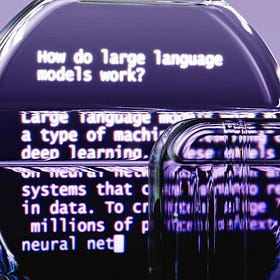Machine Learning for Hospital Nurse Staffing Optimization and Cost Management
An overview of the problem and an ML-based system developed in Spain with a review of the outcomes
Coming out of the peak Covid-19 era, the hospital staffing crisis has stabilized, but is far from resolved. The last five years has ushered in a period of experimentation and innovation with digital technologies and computational tools to address nursing workforce issues. In particular, given the multi-factorial nature of staffing decisions and the importance of the topic, the problem is well-suited for machine learning (ML)-based solutions. This article will explore an example of an ML-based technology used to better manage staffing in the emergency department.
The Growing Crisis in Hospital Staffing
Health care facilities across the United States face sustained and complex challenges in managing their nursing workforce effectively. Emergency departments (EDs) in particular struggle with unpredictable patient volumes, leading to periods of both understaffing and overstaffing that can compromise patient care (generally, understaffing) and increase costs (generally, over staffing). During peak times, understaffing can result in longer wait times, increased patient mortality rates, and staff burnout. Conversely, overstaffing during slower periods unnecessarily increases operational costs.
The consequences of poor staffing optimization extend beyond immediate patient care. When EDs are understaffed, patients may leave without being seen, leading to lost revenue and potential adverse health outcomes. Staff morale suffers under the strain of heavy workloads, contributing to higher turnover rates and additional recruitment and training costs.
Current Approaches to Nurse Staffing Management
Most hospitals currently rely on traditional methods for staff scheduling and allocation:
Static Staffing Models: Many facilities maintain fixed staffing levels based on historical averages, with minimal adjustment for seasonal variations or other predictable patterns. This inflexible approach often results in mismatches between staffing levels and actual patient demand.
Manual Forecasting: Nurse managers typically use their experience and simple historical data to predict staffing needs, without the benefit of sophisticated analytical tools. While this approach leverages valuable institutional knowledge, it lacks the precision possible with modern data analysis techniques.
Reactive Staffing: Some facilities employ on-call staff or contingent staffing agency nurses to address unexpected surges in patient volume. While this provides some flexibility, it's often more expensive than optimal proactive staffing and can lead to inconsistent care quality.
Often, facilities will use a combination of approaches to manage staffing needs. In some cases, there is a general shortage of clinical staff in a local geography, so the problems may not be solved with better planning and prediction afforded by machine learning models.
Machine Learning: A Revolutionary Approach to Staffing Optimization
Machine learning models are useful for a few reasons. First, they can automate data analysis in light of continuously updated data. Second, they can take into account a large number of factors that may influence the need for staffing. These factors may include historical patient volume, seasonal variation, staffing variables like nurse availability, acuity and complexity of patient cases, publicly available community data like population shifts, sporting event times, and the severity of the pollen count. Imagine being able to schedule nurses four weeks in advance while accounting for likely patient volume accurately.
A research paper by Zlotnik et al. demonstrates how machine learning techniques can transform hospital staffing management. The study, conducted at a 1,100-bed specialized care hospital in Spain, shows promising results for using advanced analytics to predict ED visit volumes and optimize nurse staffing levels. While outside the United States, the variability in ED staffing needs is likely similar.
Key Components of the Machine Learning Approach
The researchers developed a comprehensive ML-based system that includes:
Time-Series Analysis: The model incorporates various temporal factors including day of week, holidays, month of year, and week number to identify patterns in ED visit volumes.
Multiple Prediction Horizons: The system can generate forecasts ranging from 2 to 24 weeks ahead, with an 8-hour granularity that matches typical nursing shifts.
Advanced Algorithms: The study compared multiple machine learning approaches, including Support Vector Regression (SVR) and M5P tree models, against simpler statistical methods.
Impressive Results and Cost Savings
The implementation of machine learning-based staffing optimization in this particular facility demonstrated significant improvements:
Financial Impact: The study showed potential yearly savings of up to €683,500 through more efficient staff allocation (i.e. reducing overstaffing).
Reduced Understaffing: Severe and medium understaffing situations were reduced by more than an order of magnitude compared to traditional staffing methods.
Better Prediction Accuracy: Both SVR and M5P models significantly outperformed conventional forecasting approaches, with the ability to predict staffing needs up to 24 weeks in advance.
These results did not occur in a prospective evaluation, so there may be some differences if tested in the real world compared to the modeling in this study, but the results show the potential. However, staffing models are one thing, but when they meet human nature, they do not always perform as expected.
Practical Implementation Considerations
While the results are promising, hospitals considering implementing machine learning for staffing optimization should consider several factors:
Technical Requirements
In U.S. facilities, the electronic medical record and the organization’s ability to access data in a useable format can dictate the feasibility of this type of system. This can be difficult within certain U.S. hospitals. Generally, hospitals would need to consider the following concepts for implementation of a system like the one used in the study:
Access to historical patient volume data
Implementation of appropriate software systems
Integration with existing hospital information systems like EMRs
Integration with and access to other community-level and demographic data
Staff training on new technologies and processes
Operational Considerations
An ML-based system for staffing must take into account the following operational concepts:
Shift handover implications
Specialized care requirements
Emergency situation protocols
Staff skill mix and experience levels
Importantly, patient acuity and severity are important factors to note. Simple nurse-to-patient ratios do not always take into account the complexity of the care necessary for an individual patient. Models that have access to clinical data from electronic medical records may be able to incorporate variables related to severity.
Future Implications for Healthcare Management
The success of machine learning in optimizing nurse staffing has broader implications for healthcare management. This approach could be extended to:
Staff Planning: Beyond emergency departments, similar systems could optimize staffing across all hospital departments like medical-surgical floors and intensive care units.
Resource Allocation: The same predictive techniques could help manage other hospital resources, from equipment to supplies.
Quality Improvement: Better staffing optimization could lead to improved patient outcomes and satisfaction scores.
Conclusion
Machine learning represents a powerful tool for addressing the persistent challenges of hospital nurse staffing. The research demonstrates that sophisticated predictive models can significantly reduce both understaffing and overstaffing while generating substantial cost savings. As healthcare facilities continue to face pressure to improve efficiency while maintaining quality care, machine learning-based staffing optimization may become an essential component of hospital management.
The successful implementation of such systems requires careful consideration of both technical and operational factors, but the potential benefits in terms of improved patient care, staff satisfaction, and financial performance make it an investment worth considering for modern healthcare facilities.
Is your facility leveraging advanced analytics for staffing purposes?
Three Real Applications of Large Language Models in Nursing
Health care leaders are voraciously discussing a significant transformation of care delivery through artificial intelligence, particularly with the emergence of large language models (LLMs) like ChatGPT. These AI systems, trained on vast amounts of text data, can understand and generate human-like responses to complex queries. Think of them as sophistic…




